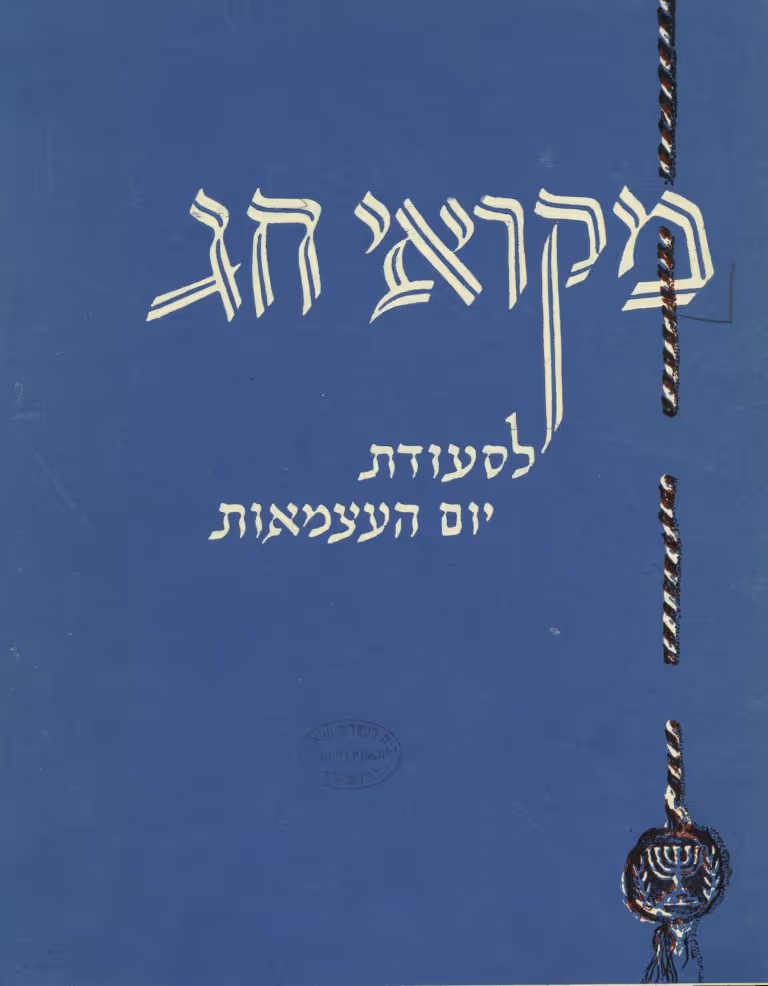

Why Was the IDF’s Haggadah of Independence Censored?
When David Ben-Gurion declared the establishment of the State of Israel on May 14, 1948 (5 Iyar, 5708), the War of Independence was already well underway. And as if that wasn’t enough, the day after this declaration, the second stage of the war began as Arab armies invaded the new country. During the war, which only officially ended on July 20, 1949, it became clear that the anniversary of the state's establishment was a cause worthy of national celebration. And so, in April 1949, the Independence Day Law was passed.
But how can you create an Independence Day (Yom Ha'Atzmaut) celebration out of nothing? What kind of content can you pour into it? And is that even possible in the midst of an actual war? Considering all this, it's perhaps not surprising to learn that for the first few years, the holiday went through several incarnations until the state ceremonies and official events for Yom Ha'Atzmaut took shape. Of course, the shadow cast by the lengthy and difficult War of Independence and the unresolved tension between the grief of the bereaved families and the joy of independence didn’t make things any easier. In 1951, the government decided to resolve this by placing Israel's Memorial Day for its fallen soldiers right before Independence Day.
The following year, the IDF decided to launch a celebratory initiative. The goal: to set Independence Day apart from the rest of the year. The strategy: to make this national holiday seem similar to more traditional religious holidays in practice. And thus, the Haggadah of Independence was born. The name likely doesn’t ring a bell. Compiled by author Aharon Megged, the IDF’s public information branch, in cooperation with the Chief Cultural Officer, published it in 1952. The entire publication was pushed forward by then Minister of Education Ben-Zion Dinur.

When David Ben-Gurion declared the establishment of the State of Israel on May 14, 1948 (5 Iyar, 5708), the War of Independence was already well underway. And as if that wasn’t enough, the day after this declaration, the second stage of the war began as Arab armies invaded the new country. During the war, which only officially ended on July 20, 1949, it became clear that the anniversary of the state's establishment was a cause worthy of national celebration. And so, in April 1949, the Independence Day Law was passed.
But how can you create an Independence Day (Yom Ha'Atzmaut) celebration out of nothing? What kind of content can you pour into it? And is that even possible in the midst of an actual war? Considering all this, it's perhaps not surprising to learn that for the first few years, the holiday went through several incarnations until the state ceremonies and official events for Yom Ha'Atzmaut took shape. Of course, the shadow cast by the lengthy and difficult War of Independence and the unresolved tension between the grief of the bereaved families and the joy of independence didn’t make things any easier. In 1951, the government decided to resolve this by placing Israel's Memorial Day for its fallen soldiers right before Independence Day.
The following year, the IDF decided to launch a celebratory initiative. The goal: to set Independence Day apart from the rest of the year. The strategy: to make this national holiday seem similar to more traditional religious holidays in practice. And thus, the Haggadah of Independence was born. The name likely doesn’t ring a bell. Compiled by author Aharon Megged, the IDF’s public information branch, in cooperation with the Chief Cultural Officer, published it in 1952. The entire publication was pushed forward by then Minister of Education Ben-Zion Dinur.

When David Ben-Gurion declared the establishment of the State of Israel on May 14, 1948 (5 Iyar, 5708), the War of Independence was already well underway. And as if that wasn’t enough, the day after this declaration, the second stage of the war began as Arab armies invaded the new country. During the war, which only officially ended on July 20, 1949, it became clear that the anniversary of the state's establishment was a cause worthy of national celebration. And so, in April 1949, the Independence Day Law was passed.
But how can you create an Independence Day (Yom Ha'Atzmaut) celebration out of nothing? What kind of content can you pour into it? And is that even possible in the midst of an actual war? Considering all this, it's perhaps not surprising to learn that for the first few years, the holiday went through several incarnations until the state ceremonies and official events for Yom Ha'Atzmaut took shape. Of course, the shadow cast by the lengthy and difficult War of Independence and the unresolved tension between the grief of the bereaved families and the joy of independence didn’t make things any easier. In 1951, the government decided to resolve this by placing Israel's Memorial Day for its fallen soldiers right before Independence Day.
The following year, the IDF decided to launch a celebratory initiative. The goal: to set Independence Day apart from the rest of the year. The strategy: to make this national holiday seem similar to more traditional religious holidays in practice. And thus, the Haggadah of Independence was born. The name likely doesn’t ring a bell. Compiled by author Aharon Megged, the IDF’s public information branch, in cooperation with the Chief Cultural Officer, published it in 1952. The entire publication was pushed forward by then Minister of Education Ben-Zion Dinur.



The order of this Haggadah followed the format of the Passover Haggadah and took inspiration from it. The opening words of most of the passages were taken from the Passover Haggadah and emphasized, while the continuation of the passages changes into an independence context. For example: “We were slaves to the nations in all countries […] go out and learn what the Arabs wanted to do to us […] and the British were imposed on us as the governors of the land, commissioners, and police […] and so it was that at midnight on November 29th […] how many good virtues our army has.”
Photographs from the Hebrew Yishuv and the War of Independence are interspersed throughout this Haggadah, and along with the text, they highlight the values of Zionism and the pioneering spirit. For example: “And we will look at the land and behold, it is desolate…and we will begin to plow and sow and work the land, and we will build villages in the Galilee and Judea, and the valley and in the Negev, and cities on the mountains and the coasts…”
The strength of the army and its soldiers is also repeatedly emphasized. Take for example: “And it came to pass from that day, half of our people were laboring and half were holding rifles…” [as inspired by the passage from Nehemia 4:15]; “and we will make for ourselves weapons of war and will establish for ourselves a guarding arm, a protective arm, and a crushing arm, the Guard Corps [חי"ם, a branch of the Haganah], the Field Corps [חי"ש, another Haganah branch], and the Palmach.”; “Blessed is God, Blessed is He, blessed are the first and last pioneers, blessed are the guards and defenders, blessed are the warriors, sailors, and navigators…in whose merit we have made it this far”; “Not at the hand of an angel nor at the hand of a seraph, nor at the hand of a messenger did we smite the enemy and defeat him, but at the hands of the Israel Defense Forces…”
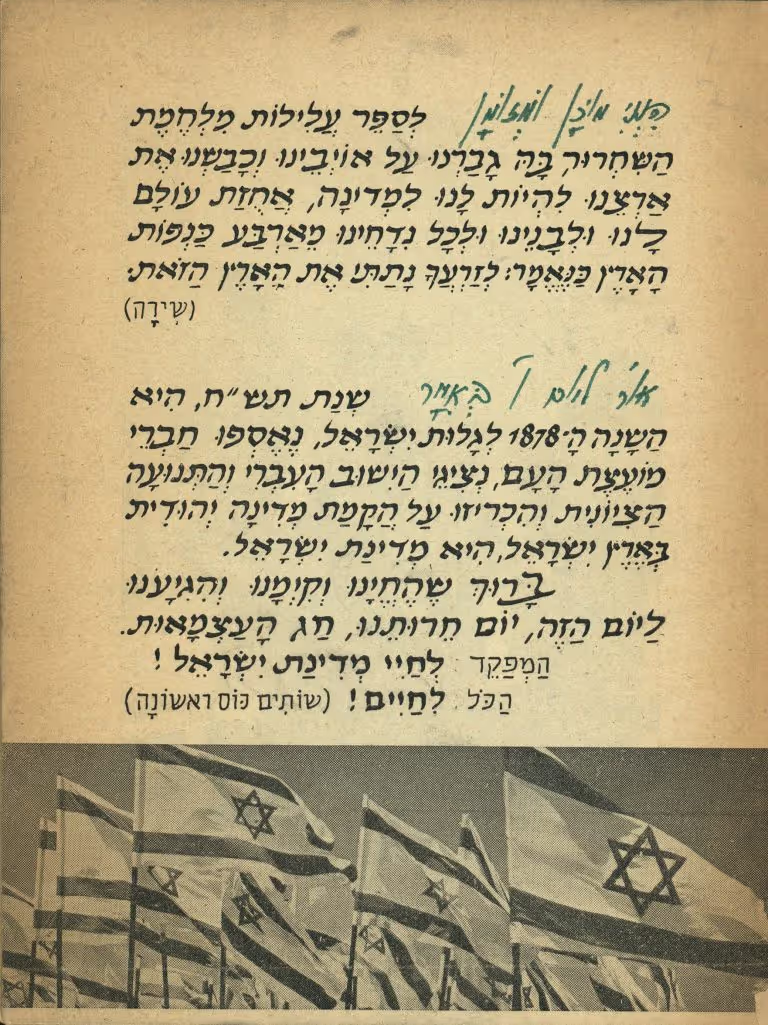
The order of this Haggadah followed the format of the Passover Haggadah and took inspiration from it. The opening words of most of the passages were taken from the Passover Haggadah and emphasized, while the continuation of the passages changes into an independence context. For example: “We were slaves to the nations in all countries […] go out and learn what the Arabs wanted to do to us […] and the British were imposed on us as the governors of the land, commissioners, and police […] and so it was that at midnight on November 29th […] how many good virtues our army has.”
Photographs from the Hebrew Yishuv and the War of Independence are interspersed throughout this Haggadah, and along with the text, they highlight the values of Zionism and the pioneering spirit. For example: “And we will look at the land and behold, it is desolate…and we will begin to plow and sow and work the land, and we will build villages in the Galilee and Judea, and the valley and in the Negev, and cities on the mountains and the coasts…”
The strength of the army and its soldiers is also repeatedly emphasized. Take for example: “And it came to pass from that day, half of our people were laboring and half were holding rifles…” [as inspired by the passage from Nehemia 4:15]; “and we will make for ourselves weapons of war and will establish for ourselves a guarding arm, a protective arm, and a crushing arm, the Guard Corps [חי"ם, a branch of the Haganah], the Field Corps [חי"ש, another Haganah branch], and the Palmach.”; “Blessed is God, Blessed is He, blessed are the first and last pioneers, blessed are the guards and defenders, blessed are the warriors, sailors, and navigators…in whose merit we have made it this far”; “Not at the hand of an angel nor at the hand of a seraph, nor at the hand of a messenger did we smite the enemy and defeat him, but at the hands of the Israel Defense Forces…”

The order of this Haggadah followed the format of the Passover Haggadah and took inspiration from it. The opening words of most of the passages were taken from the Passover Haggadah and emphasized, while the continuation of the passages changes into an independence context. For example: “We were slaves to the nations in all countries […] go out and learn what the Arabs wanted to do to us […] and the British were imposed on us as the governors of the land, commissioners, and police […] and so it was that at midnight on November 29th […] how many good virtues our army has.”
Photographs from the Hebrew Yishuv and the War of Independence are interspersed throughout this Haggadah, and along with the text, they highlight the values of Zionism and the pioneering spirit. For example: “And we will look at the land and behold, it is desolate…and we will begin to plow and sow and work the land, and we will build villages in the Galilee and Judea, and the valley and in the Negev, and cities on the mountains and the coasts…”
The strength of the army and its soldiers is also repeatedly emphasized. Take for example: “And it came to pass from that day, half of our people were laboring and half were holding rifles…” [as inspired by the passage from Nehemia 4:15]; “and we will make for ourselves weapons of war and will establish for ourselves a guarding arm, a protective arm, and a crushing arm, the Guard Corps [חי"ם, a branch of the Haganah], the Field Corps [חי"ש, another Haganah branch], and the Palmach.”; “Blessed is God, Blessed is He, blessed are the first and last pioneers, blessed are the guards and defenders, blessed are the warriors, sailors, and navigators…in whose merit we have made it this far”; “Not at the hand of an angel nor at the hand of a seraph, nor at the hand of a messenger did we smite the enemy and defeat him, but at the hands of the Israel Defense Forces…”



Ten thousand copies of the Haggadah were printed, and it was even published in the Independence Day section of the Ma’ariv newspaper on April 30, 1952. At the beginning of the Haggadah, the newspaper’s editor added a moving preface: “The [IDF] education branch has also contributed, with a literary creation that is full of charm and the joy of true pathos. This Haggadah of Independence is a wonderful merging of the old with the new […] This Haggadah represents the glory of the past and the genius of the present and was written by Aharon Megged to serve as the background for the army’s festive holiday meals, and we are including it here in the belief that this will become a holiday Haggadah for every home in Israel in the future.”
The editor of Ma’ariv would be greatly disappointed, within only one week. The content of the Haggadah – which highlights human acts and the IDF’s greatness and hides any divine role played in the redemption – and the secularization of the text from the Passover Haggadah infuriated many religious circles. The chief rabbis demanded that the Haggadah of Independence be shelved, and by order of Prime Minister Ben-Gurion, it was decided that all copies would be collected and destroyed. “Due to considerations that the format of this booklet and sections of its content might offend some of the IDF soldiers, the authorized body in the General Staff has not approved the publication of this booklet and has prohibited its distribution among military units” (Ma’ariv, May 7, 1952).
However, future generations can rest at ease. Some rare copies of this secret Haggadah of Independence are kept today at the National Library of Israel.

Ten thousand copies of the Haggadah were printed, and it was even published in the Independence Day section of the Ma’ariv newspaper on April 30, 1952. At the beginning of the Haggadah, the newspaper’s editor added a moving preface: “The [IDF] education branch has also contributed, with a literary creation that is full of charm and the joy of true pathos. This Haggadah of Independence is a wonderful merging of the old with the new […] This Haggadah represents the glory of the past and the genius of the present and was written by Aharon Megged to serve as the background for the army’s festive holiday meals, and we are including it here in the belief that this will become a holiday Haggadah for every home in Israel in the future.”
The editor of Ma’ariv would be greatly disappointed, within only one week. The content of the Haggadah – which highlights human acts and the IDF’s greatness and hides any divine role played in the redemption – and the secularization of the text from the Passover Haggadah infuriated many religious circles. The chief rabbis demanded that the Haggadah of Independence be shelved, and by order of Prime Minister Ben-Gurion, it was decided that all copies would be collected and destroyed. “Due to considerations that the format of this booklet and sections of its content might offend some of the IDF soldiers, the authorized body in the General Staff has not approved the publication of this booklet and has prohibited its distribution among military units” (Ma’ariv, May 7, 1952).
However, future generations can rest at ease. Some rare copies of this secret Haggadah of Independence are kept today at the National Library of Israel.



Ten thousand copies of the Haggadah were printed, and it was even published in the Independence Day section of the Ma’ariv newspaper on April 30, 1952. At the beginning of the Haggadah, the newspaper’s editor added a moving preface: “The [IDF] education branch has also contributed, with a literary creation that is full of charm and the joy of true pathos. This Haggadah of Independence is a wonderful merging of the old with the new […] This Haggadah represents the glory of the past and the genius of the present and was written by Aharon Megged to serve as the background for the army’s festive holiday meals, and we are including it here in the belief that this will become a holiday Haggadah for every home in Israel in the future.”
The editor of Ma’ariv would be greatly disappointed, within only one week. The content of the Haggadah – which highlights human acts and the IDF’s greatness and hides any divine role played in the redemption – and the secularization of the text from the Passover Haggadah infuriated many religious circles. The chief rabbis demanded that the Haggadah of Independence be shelved, and by order of Prime Minister Ben-Gurion, it was decided that all copies would be collected and destroyed. “Due to considerations that the format of this booklet and sections of its content might offend some of the IDF soldiers, the authorized body in the General Staff has not approved the publication of this booklet and has prohibited its distribution among military units” (Ma’ariv, May 7, 1952).
However, future generations can rest at ease. Some rare copies of this secret Haggadah of Independence are kept today at the National Library of Israel.

Despite, or perhaps as a result of, the IDF shelving the Haggadah of Independence, there were other initiatives to publish Haggadahs in a similar vein. Three years after this one was shelved, ahead of Independence Day 1955, a booklet entitled Holiday Readings for the Independence Day Feast was published. The booklet was edited by Avraham Even-Shoshan under the auspices of the Ministry of Education and Culture. The readings inside were mostly written by Yitzhak Shalev, with some isolated passages by Aharon Megged, who had written the original Haggadah of Independence. Like its predecessor, Holiday Readings was harshly criticized by religious elements who demanded that it be shelved as well. But the sharp opposition and the calls to shelve it actually caused more and more copies to be purchased, as reported by Ma’ariv on April 2, 1955.
The 1952 Haggadah of Independence was not the country's first Independence Haggadah, just as Holiday Readings for the Independence Day Feast wasn’t the last. Since Israel’s first ever Independence Day, many special readings for Independence Day have been published in many kibbutzim. Dr. Aaron Ahrend from Bar Ilan University’s Talmud Department has this to say: “There are different names for these readings: Haggadah, Holiday Haggadah, Tractate, Megillah (scroll), Holiday Megillah, Holiday Readings, and there are some that do not even have a name. They all head in the same direction, which is why we will refer to each of them hereafter as a Haggadah."

Despite, or perhaps as a result of, the IDF shelving the Haggadah of Independence, there were other initiatives to publish Haggadahs in a similar vein. Three years after this one was shelved, ahead of Independence Day 1955, a booklet entitled Holiday Readings for the Independence Day Feast was published. The booklet was edited by Avraham Even-Shoshan under the auspices of the Ministry of Education and Culture. The readings inside were mostly written by Yitzhak Shalev, with some isolated passages by Aharon Megged, who had written the original Haggadah of Independence. Like its predecessor, Holiday Readings was harshly criticized by religious elements who demanded that it be shelved as well. But the sharp opposition and the calls to shelve it actually caused more and more copies to be purchased, as reported by Ma’ariv on April 2, 1955.
The 1952 Haggadah of Independence was not the country's first Independence Haggadah, just as Holiday Readings for the Independence Day Feast wasn’t the last. Since Israel’s first ever Independence Day, many special readings for Independence Day have been published in many kibbutzim. Dr. Aaron Ahrend from Bar Ilan University’s Talmud Department has this to say: “There are different names for these readings: Haggadah, Holiday Haggadah, Tractate, Megillah (scroll), Holiday Megillah, Holiday Readings, and there are some that do not even have a name. They all head in the same direction, which is why we will refer to each of them hereafter as a Haggadah."

Despite, or perhaps as a result of, the IDF shelving the Haggadah of Independence, there were other initiatives to publish Haggadahs in a similar vein. Three years after this one was shelved, ahead of Independence Day 1955, a booklet entitled Holiday Readings for the Independence Day Feast was published. The booklet was edited by Avraham Even-Shoshan under the auspices of the Ministry of Education and Culture. The readings inside were mostly written by Yitzhak Shalev, with some isolated passages by Aharon Megged, who had written the original Haggadah of Independence. Like its predecessor, Holiday Readings was harshly criticized by religious elements who demanded that it be shelved as well. But the sharp opposition and the calls to shelve it actually caused more and more copies to be purchased, as reported by Ma’ariv on April 2, 1955.
The 1952 Haggadah of Independence was not the country's first Independence Haggadah, just as Holiday Readings for the Independence Day Feast wasn’t the last. Since Israel’s first ever Independence Day, many special readings for Independence Day have been published in many kibbutzim. Dr. Aaron Ahrend from Bar Ilan University’s Talmud Department has this to say: “There are different names for these readings: Haggadah, Holiday Haggadah, Tractate, Megillah (scroll), Holiday Megillah, Holiday Readings, and there are some that do not even have a name. They all head in the same direction, which is why we will refer to each of them hereafter as a Haggadah."

tab1img1=And our people chased the enemy gangs - From the Haggadah of Independence.
tab2img1=I am ready and prepared to tell the tales of the War of Independence - From the Haggadah of Independence.
tab3img2=Because we overcame our enemy - From the Haggadah of Independence.
tab4img3=Holiday Readings for the Independence Day Feast - Despite the criticism, the booklet was a success.





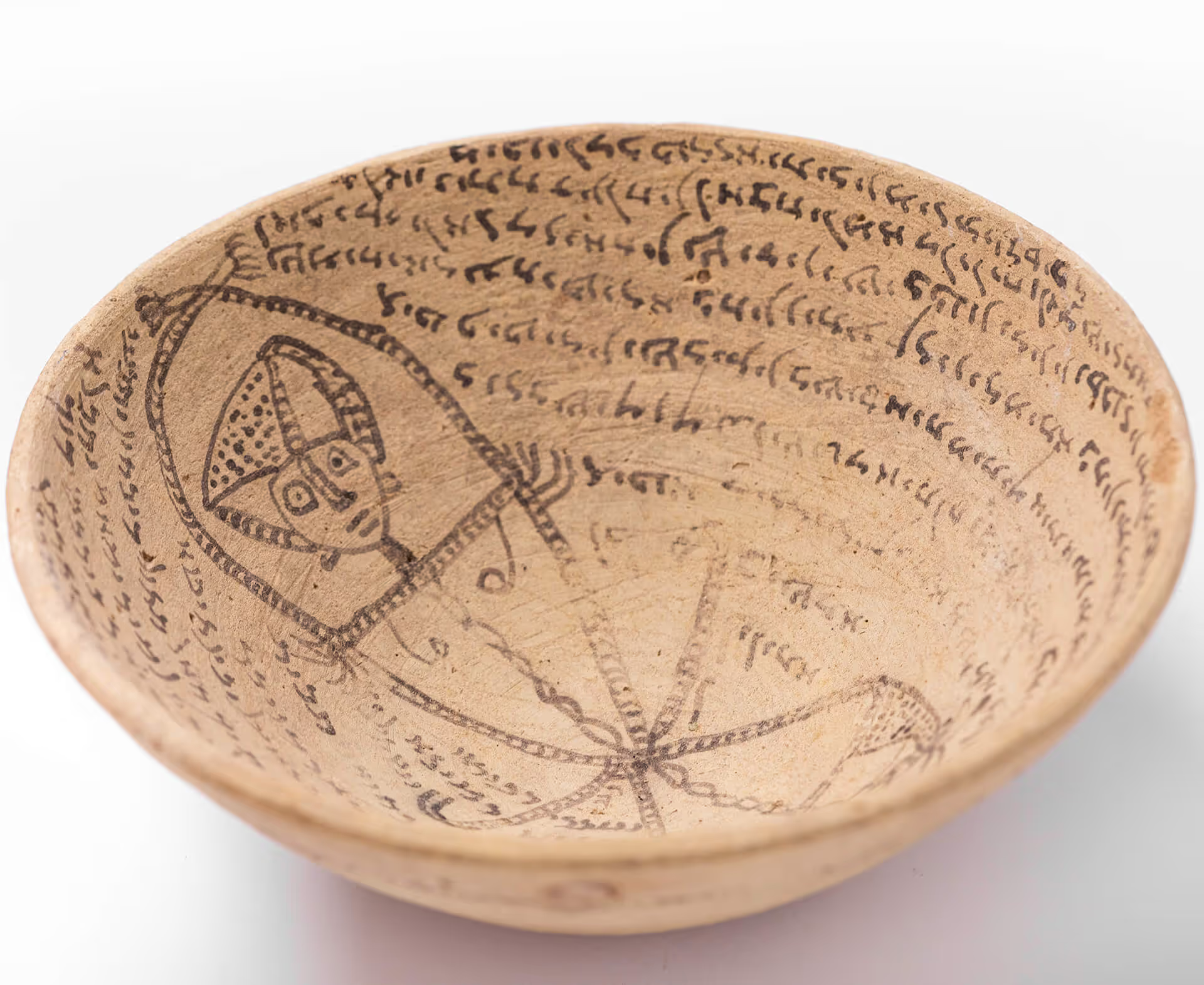
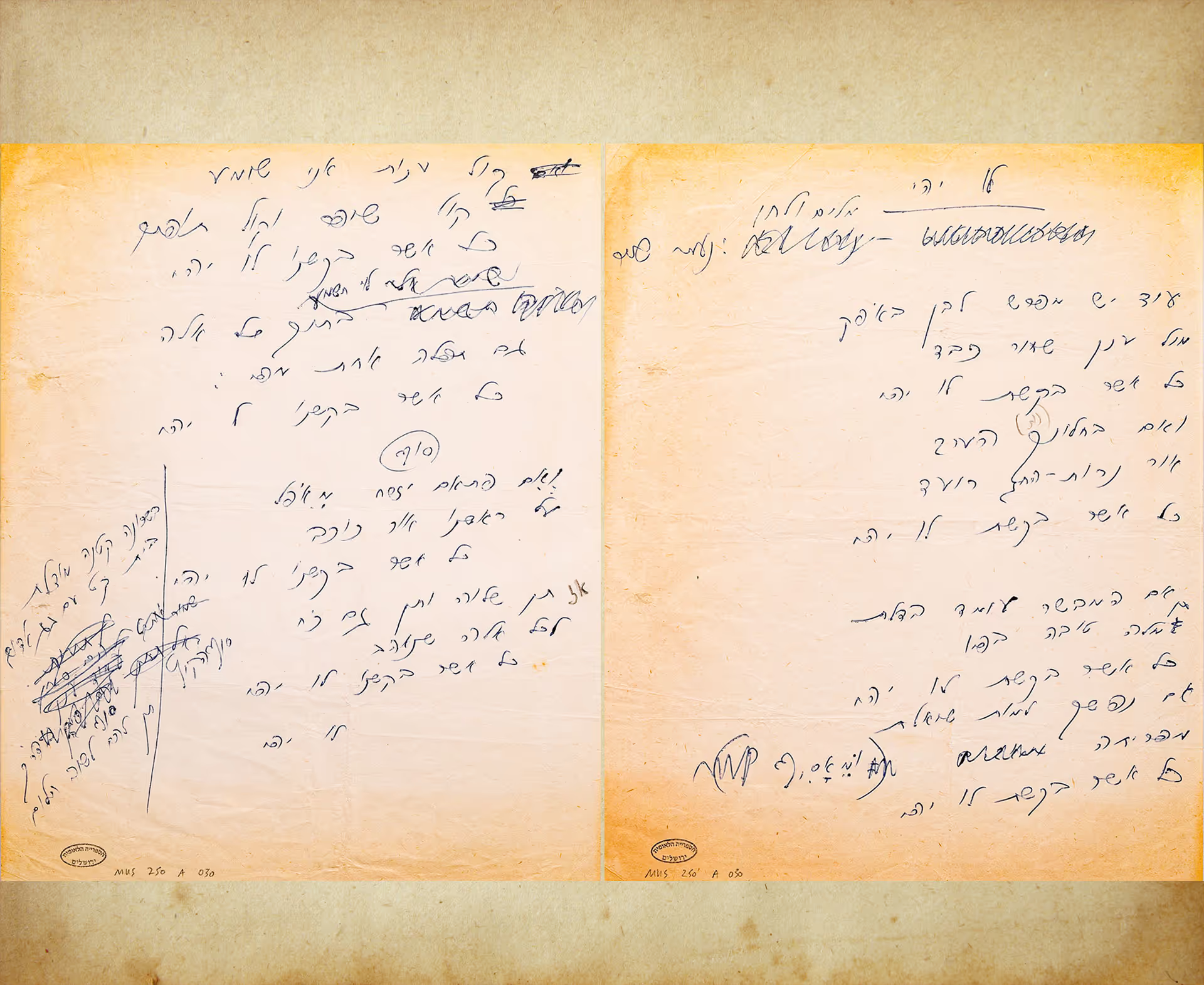
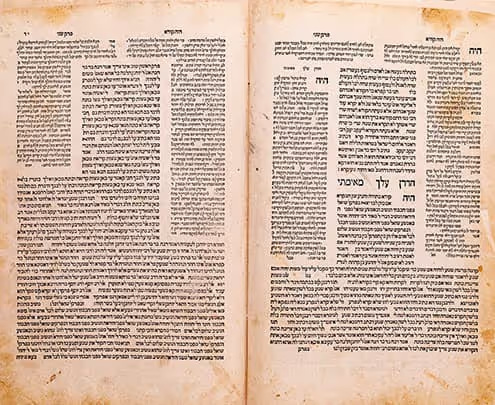







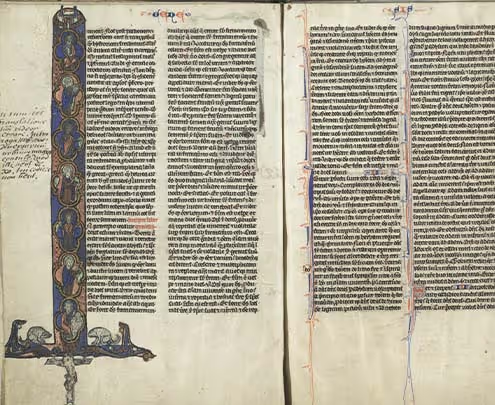

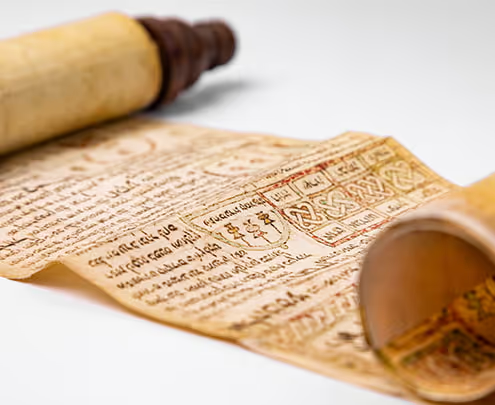


.avif)
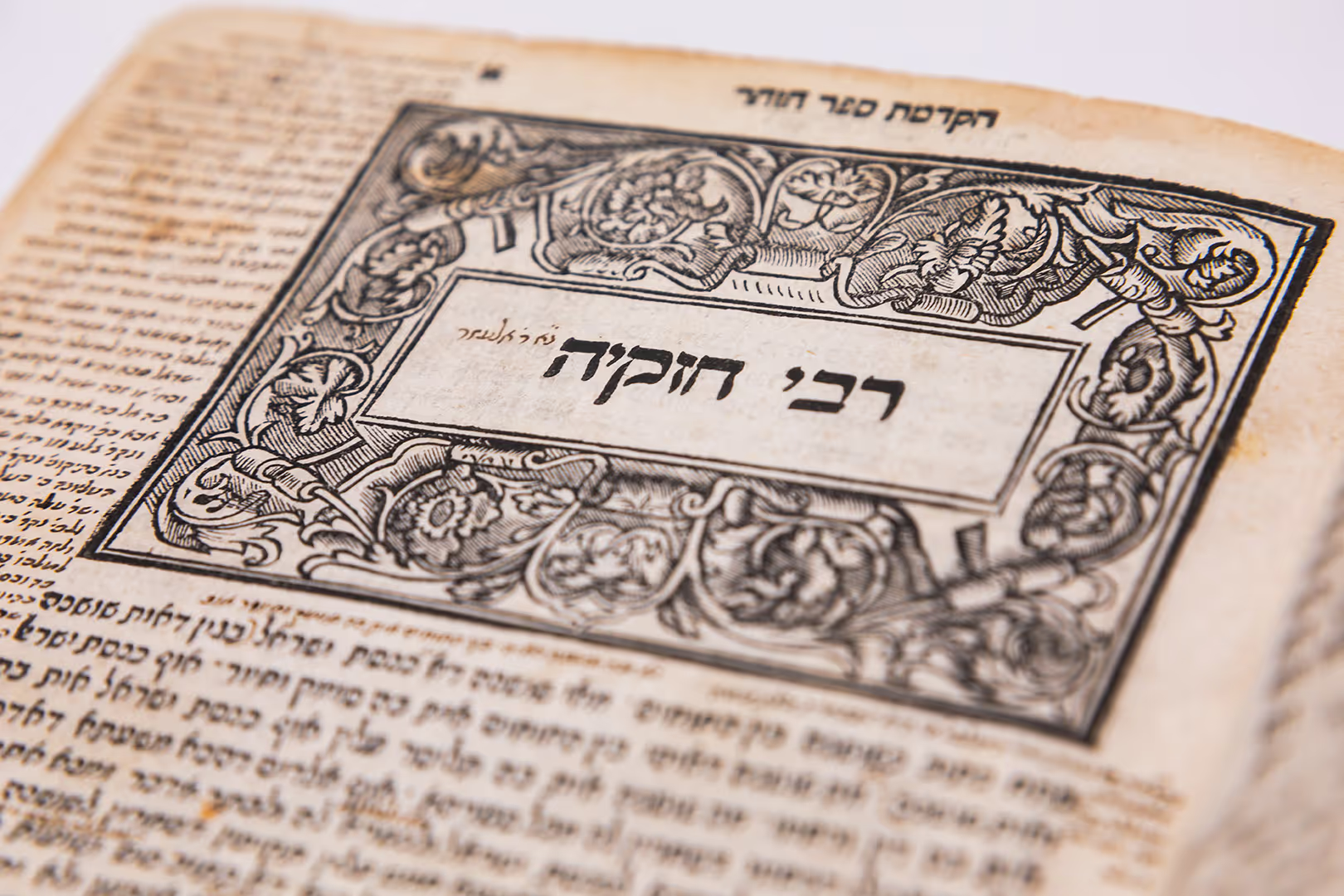





.svg)





